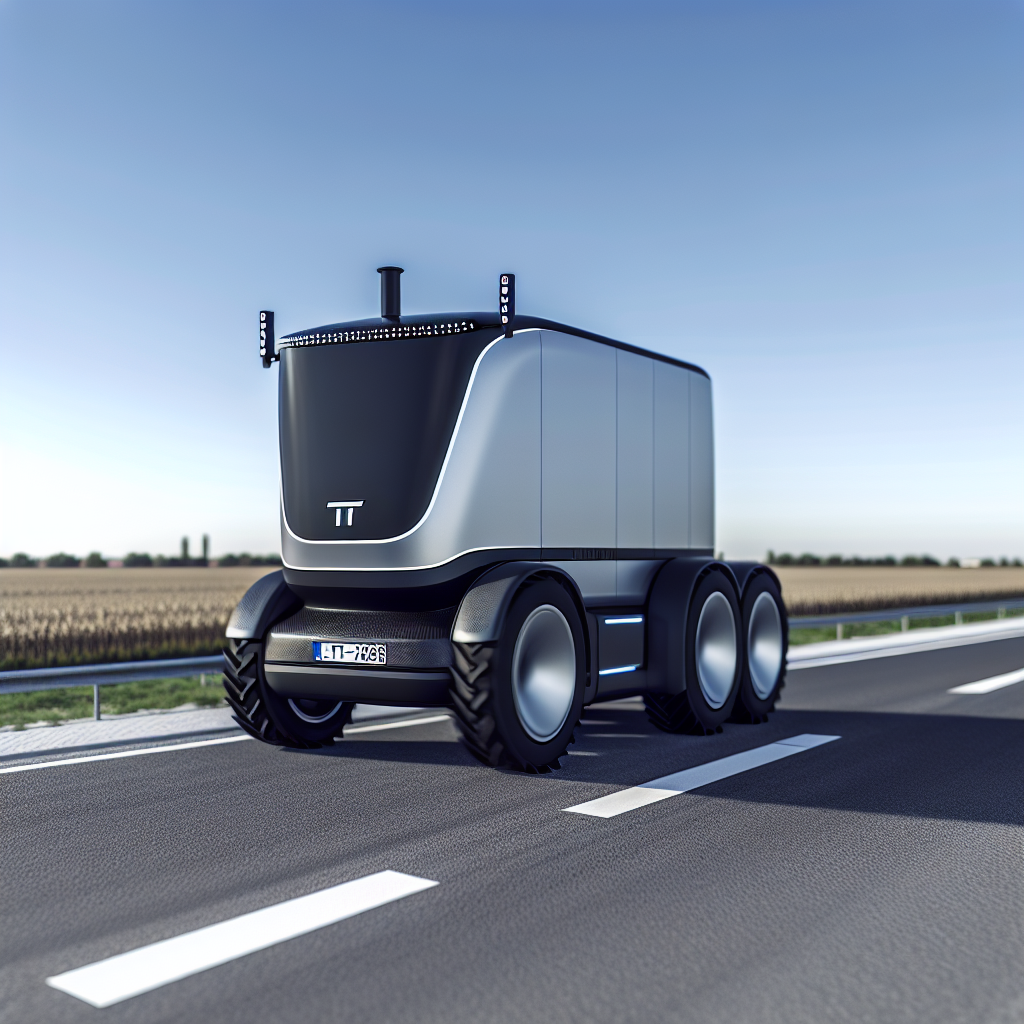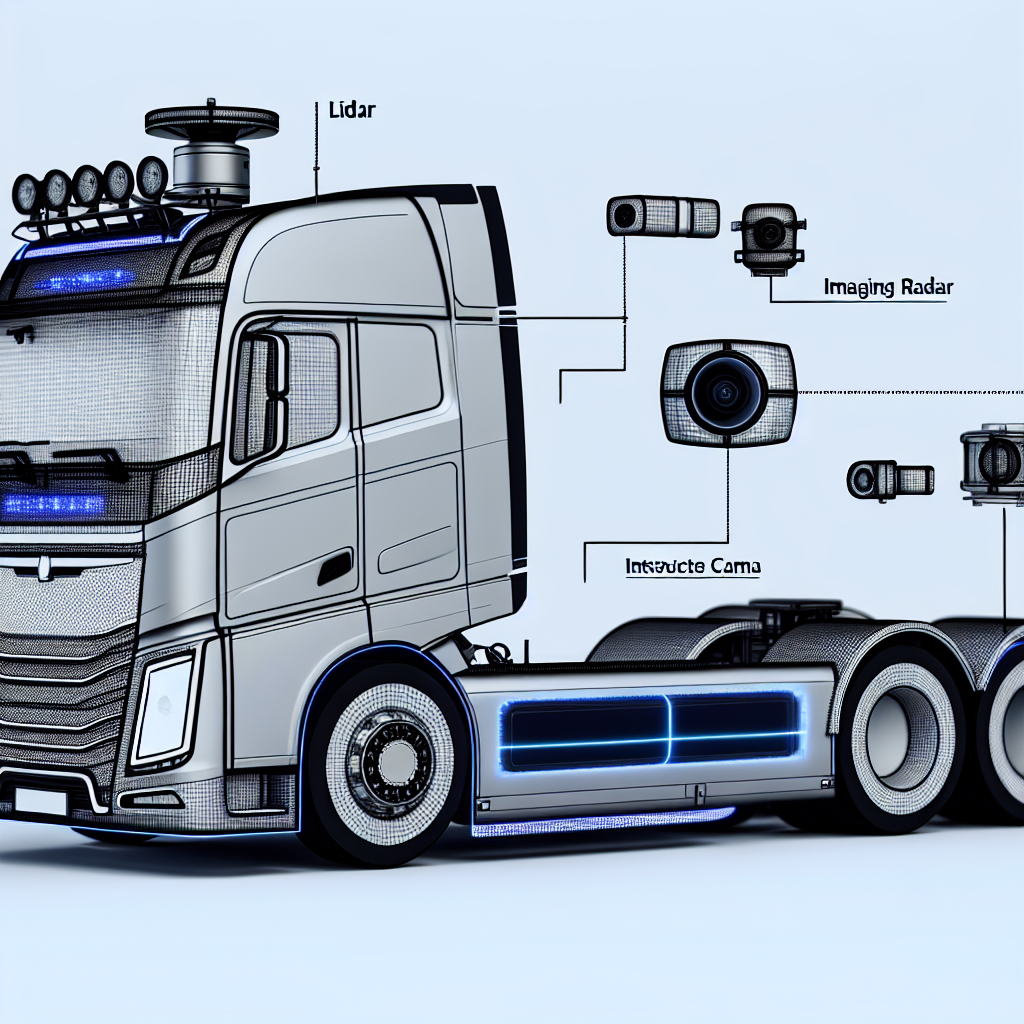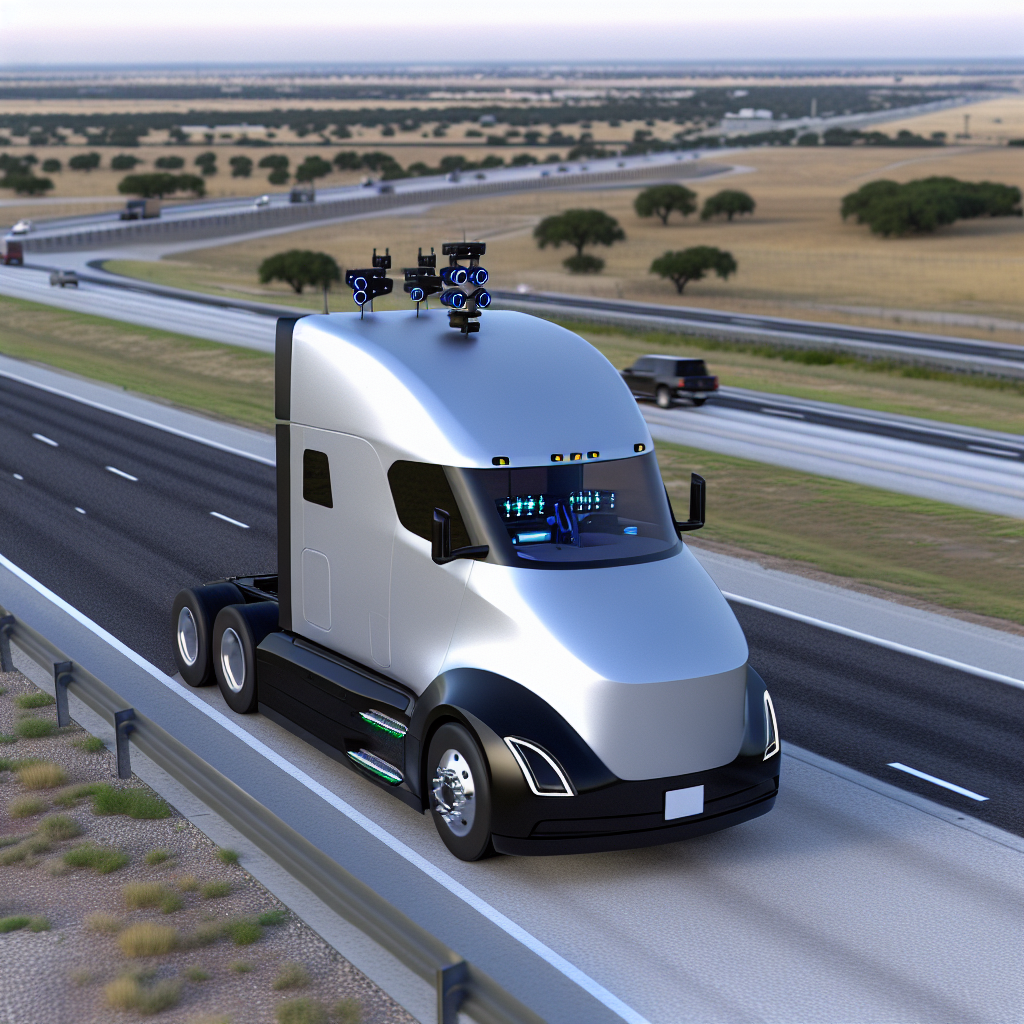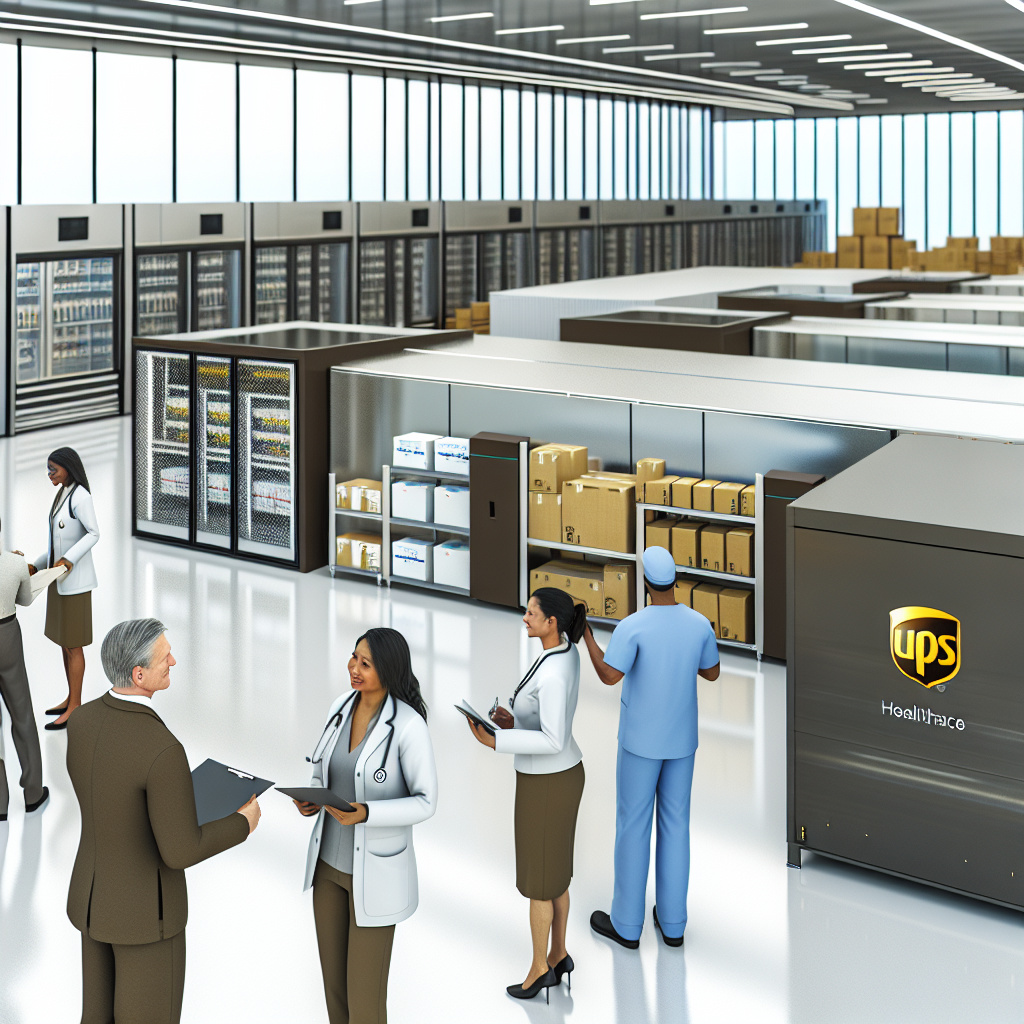In the evolving landscape of transportation, second-generation autonomous trucks are at the forefront of revolutionizing the trucking industry. These advanced vehicles, equipped with cutting-edge technology and enhanced safety features, promise to streamline operations and improve efficiency significantly. They leverage real-world data and sophisticated algorithms to navigate highways autonomously, paving the way for a future where logistics is seamless and innovative.
This shift holds immense potential, especially as manufacturers like International, in collaboration with PlusAI, launch groundbreaking pilot programs like the one along Texas’s Interstate-35 corridor. This initiative is not just a technological marvel; it represents a pivotal moment in proving the commercial viability of autonomous trucking solutions, ensuring safer and more efficient transport across the nation.
The Significance of Autonomous Trucks
As the trucking industry evolves, autonomous trucks are gaining importance due to their potential to significantly improve safety, efficiency, and the overall customer experience. Their rise is bolstered by a range of pilot programs and industry insights that illustrate the benefits these vehicles bring to logistics and transportation.
Safety Improvements
Safety is a top priority in the trucking industry, and autonomous trucks are designed to elevate safety standards. Research has shown that these vehicles exhibit superior safety performance compared to human drivers. For instance, a study examining Waymo’s autonomous vehicles reported zero bodily injury claims over 3.8 million miles driven, while human drivers averaged 1.11 claims per million miles. Additionally, property damage claims were considerably lower, highlighting the capability of autonomous technology to reduce accidents on the road.
Companies engaging in autonomous technology, such as Kodiak Robotics, have instituted comprehensive safety protocols. These protocols facilitate enhanced pre-trip inspections, ensuring that any potential vehicle defects are identified and addressed proactively, thus improving reliability on the road.
Efficiency Gains
Autonomous trucks leverage technology to enhance operational efficiency dramatically. One of their primary advantages is the ability to operate continuously without mandatory rest periods. This feature leads to significant reductions in delivery times and increased productivity, allowing companies to meet customer demand more effectively.
Integrating artificial intelligence (AI) into trucking operations can also result in substantial cost savings. AI-driven route optimization can decrease fuel expenses by up to 15%, and predictive maintenance strategies powered by AI can significantly lower vehicle downtime, further enhancing efficiency. Efforts to automate and optimize logistics processes thus position businesses to navigate resource challenges effectively.
Enhancements in Customer Experience
The uninterrupted operation of autonomous trucks directly influences customer satisfaction by ensuring a steady flow of goods. Faster delivery times are made possible through continuous operation, helping businesses improve their supply chain efficiency and respond more readily to evolving market demands. Consequently, companies can gain a competitive edge by offering reliable services that cater to customers’ need for speed.
Insights from Pilot Programs
Pilot programs are crucial for demonstrating the viability of autonomous trucks. For example, Kodiak Robotics has engaged in a collaborative pilot program with the Texas Department of Public Safety, which operates along the I-45 Corridor and focuses on meticulous pre-trip inspections. This initiative has uncovered numerous defects that might otherwise compromise safety, reiterating the need for stringent maintenance standards.
Industry Perspectives
The industry’s sentiment underscores the urgency of investing in autonomous solutions for sustained competitiveness. A report by Samsara indicates that 94% of executives in physical operations regard AI investment as essential for maintaining market advantage. As Evan Welbourne, Samsara’s head of AI and data, articulated, “AI is everywhere, and physical operations leaders are quickly embracing it. When used strategically, advances in AI can bring meaningful change to the companies that power our global economy.”
In conclusion, the emergence of autonomous trucks holds remarkable potential for transforming safety, operational efficiency, and customer experience in the trucking industry. With ongoing technological advancements and committed pilot initiatives, the transition to autonomous logistics is fast approaching reality.
The Significance of Autonomous Trucks
As the trucking industry evolves, autonomous trucks are gaining importance due to their potential to significantly improve safety, efficiency, and the overall customer experience. Their rise is bolstered by a range of pilot programs and industry insights that illustrate the benefits these vehicles bring to logistics and transportation.
Safety Improvements
Safety is a top priority in the trucking industry, and autonomous trucks are designed to elevate safety standards. Several studies highlight significant advancements:
- Accident Reduction: According to research, autonomous trucks have demonstrated a notable decrease in accident rates. For instance, AI-driven safety systems have reduced accidents involving autonomous trucks by 15% in pilot tests, while automatic emergency braking systems have decreased rear-end crashes by 39%.
- Collision Avoidance Technologies: Advanced collision avoidance systems have made autonomous trucks more adept at preventing accidents, showcasing their ability to significantly enhance road safety.
Companies engaging in autonomous technology, such as Kodiak Robotics, have instituted comprehensive safety protocols. These protocols facilitate enhanced pre-trip inspections, ensuring that any potential vehicle defects are identified and addressed proactively, thus improving reliability on the road.
Efficiency Gains
Autonomous trucks leverage technology to enhance operational efficiency dramatically. Notable advantages include:
- Fuel Efficiency: Autonomous trucks, such as those operated by TuSimple, have been noted for being at least 10% more fuel-efficient than conventional trucks, aided by AI-driven route optimization.
- Cost Savings: The implementation of autonomous technology can lead to substantial operational cost reductions, with predictions indicating savings of up to 45% in labor costs and a decrease in fuel expenses by around 15%.
- Continuous Operation: Autonomous trucks’ ability to operate non-stop, without the need for mandatory rest periods, can lead to significant reductions in delivery times and increased productivity, enabling companies to meet customer demand more efficiently.
Integrating artificial intelligence (AI) into trucking operations can also result in substantial cost savings due to enhanced route optimization, which has the potential to decrease fuel expenses significantly.
Enhancements in Customer Experience
The uninterrupted operation of autonomous trucks directly influences customer satisfaction by ensuring a steady flow of goods. Key enhancements include:
- Faster Deliveries: Autonomous trucks can operate continuously, which reduces delivery times by up to 30%, thereby improving supply chain efficiency and responsiveness to market demands.
- Improved Service Quality: With more reliable and faster deliveries, companies can gain a competitive edge by offering services that cater to customers’ need for speed and reliability.
Summary of Insights from Pilot Programs
Pilot programs are crucial for demonstrating the viability of autonomous trucks. For example, Kodiak Robotics’ partnership with the Texas Department of Public Safety underscores how meticulous inspection protocols can identify potential safety issues, leading to superior operational standards.
Industry Perspectives
The industry’s sentiment underscores the urgency of investing in autonomous solutions for sustained competitiveness. A report by Samsara indicates that 94% of executives in physical operations regard AI investment as essential for maintaining market advantage. The push for autonomous vehicles reflects a fundamental shift in how logistics can benefit from technological advancements.
The emergence of autonomous trucks holds remarkable potential for transforming safety, operational efficiency, and customer experience in the trucking industry. With ongoing technological advancements and committed pilot initiatives, the transition to autonomous logistics is fast approaching reality.
| Feature/Specification | First-Generation Autonomous Trucks | Second-Generation LT Series Truck |
|---|---|---|
| Sensor Technology | Basic sensor suites with limited capabilities | Advanced multimodal sensor kit that incorporates improved radar, cameras, and LiDAR for superior environmental perception |
| Software | Earlier iteration of autonomous driving software with basic navigation capabilities | AI-based SuperDrive software that adapts using real-world driving data for enhanced route navigation and efficiency |
| Data Integration | Limited integration of data from external environments | Extensive data integration from various sources, enabling better decision-making and route optimization |
| Operating Range | Primarily designed for specific routes with minimal adaptability to changing conditions | Capable of operating on highways and adapting seamlessly to multiple routes, optimizing for traffic and road conditions |
| Safety Features | Basic safety precautions with traditional human oversight | Enhanced safety features, including automatic braking, collision avoidance systems, and comprehensive pre-trip inspections |
| User Interface | Minimal feedback and interaction for operators | User-friendly interface providing real-time data and feedback, enabling better interaction with fleet management systems |
| Efficiency | Moderate efficiency with limitations on hours of operation | Significantly more efficient with extended operational hours and reduced downtime due to intelligent maintenance and monitoring capabilities |
| Commercial Viability | Limited pilot programs with uncertain market acceptance | Extensive customer fleet trials underway, demonstrating practical applications and proving commercial viability across the trucking industry |
This comparison emphasizes the advancements made in autonomous truck technology from the first to the second generation. The second-generation LT Series from International and PlusAI represents a significant leap forward in multiple key areas, promising enhanced safety, efficiency, and adaptability, crucial for modern logistics.
| Feature/Specification | First-Generation Autonomous Trucks | Second-Generation LT Series Truck |
|---|---|---|
| Sensor Technology | Basic sensor suites with limited capabilities | Advanced multimodal sensor kit that incorporates improved radar, cameras, and LiDAR for superior environmental perception |
| Software | Earlier iteration of autonomous driving software with basic navigation capabilities | AI-based SuperDrive software that adapts using real-world driving data for enhanced route navigation and efficiency |
| Data Integration | Limited integration of data from external environments | Extensive data integration from various sources, enabling better decision-making and route optimization |
| Operating Range | Primarily designed for specific routes with minimal adaptability to changing conditions | Capable of operating on highways and adapting seamlessly to multiple routes, optimizing for traffic and road conditions |
| Safety Features | Basic safety precautions with traditional human oversight | Enhanced safety features, including automatic braking, collision avoidance systems, and comprehensive pre-trip inspections |
| User Interface | Minimal feedback and interaction for operators | User-friendly interface providing real-time data and feedback, enabling better interaction with fleet management systems |
| Efficiency | Moderate efficiency with limitations on hours of operation | Significantly more efficient with extended operational hours and reduced downtime due to intelligent maintenance and monitoring capabilities |
| Commercial Viability | Limited pilot programs with uncertain market acceptance | Extensive customer fleet trials underway, demonstrating practical applications and proving commercial viability across the trucking industry |
This comparison emphasizes the advancements made in autonomous truck technology from the first to the second generation. The second-generation LT Series from International and PlusAI represents a significant leap forward in multiple key areas, promising enhanced safety, efficiency, and adaptability, crucial for modern logistics.


Pilot Program Details
International Motors, in collaboration with PlusAI, has initiated a pilot program deploying autonomous trucks along the Interstate-35 corridor in Texas, specifically between Laredo and Dallas. This initiative involves select fleet operators and is managed from International’s autonomous hub in San Antonio.
Sensor Suite and AI Software:
The autonomous trucks are equipped with PlusAI’s latest SuperDrive platform, which includes an updated computer system and a comprehensive sensor suite. This suite comprises imaging radar, lidar, and strategically placed cameras that provide a 360-degree view around the vehicle. SuperDrive is built on AI models trained with real-world driving data, enabling adaptability to various routes, geographies, and driving conditions.
Specific Locations Involved:
- Route: The pilot operates along the I-35 corridor between Laredo and Dallas, Texas.
- Management Hub: Operations are coordinated from International’s autonomous hub located in San Antonio.
This pilot program represents a significant step toward integrating autonomous technology into commercial freight operations, aiming to enhance safety, efficiency, and operational cost-effectiveness.
Insightful Quotes from Company Representatives
To illustrate the vision and goals of the autonomous truck pilot program, we can look to influential voices within International Motors and PlusAI.
Tobias Glitterstam, Chief Strategy and Transformation Officer at International Motors, articulates the significance of this initiative:
“This pilot program is a big step toward seamless digital operations that are designed to deliver an exceptional customer experience. By working hand-in-hand with our customers, we are proving the commercial viability of autonomous technologies and providing innovative solutions that improve safety, efficiency, and the bottom line.”
This quote reflects the company’s commitment to enhancing operational efficiency and safety through collaboration with its customers.
Glitterstam further emphasizes a broader strategic vision:
“There is a strong business case for autonomous technology in the hub-to-hub distribution model, specifically in long-haul transportation where there’s a compelling opportunity to increase operational efficiencies.”
This insight highlights the focus on long-haul applications as pivotal to the success of autonomous trucking technology.
Additionally, James Cooper, Director of Autonomous Business Development at International Motors, noted:
“Deep customer collaboration is essential to understanding how autonomous systems can optimize freight routes, enhance safety, and lower operating costs. This shared learning will guide the roadmap for scaling autonomy across major freight hubs, beginning with key corridors like I-35.”
This statement underscores the importance of customer partnerships in shaping the future of freight operations with autonomous technology.
Overall, these insights from key representatives underscore the program’s pivotal focus on enhancing customer experience, validating the commercial viability of autonomous trucks, and optimizing logistics operations through collaboration and data-driven insights.
The Technology Behind the LT Series Tractor
Recent advancements in the LT Series autonomous tractors, developed through the collaboration between International Motors and PlusAI, have significantly enhanced their safety and efficiency.
Sensor Systems:
The second-generation autonomous LT Series tractors are equipped with an updated sensor suite that includes imaging radar, lidar, and strategically placed cameras around the vehicle. This multimodal sensor kit provides comprehensive environmental perception, enabling the tractor to detect and respond to various obstacles and driving conditions effectively. [source]
Computer Software:
At the core of these tractors is PlusAI’s latest AI-based SuperDrive autonomous driving software. SuperDrive is trained directly from real-world driving data and utilizes end-to-end AI models, making it adaptable to new routes, geographies, and driving conditions. This adaptability ensures that the tractors can operate efficiently across diverse environments. [source]
Training of SuperDrive:
SuperDrive has undergone rigorous validation tests, including fully autonomous operations and advanced safety maneuvers without human intervention. These tests demonstrated the system’s capability to make complex real-time driving decisions and handle unexpected situations autonomously. The Autonomous Fallback System (AFS) within SuperDrive ensures resilience by directing the vehicle to the safest path in case of issues like sensor failures or road closures. [source]
These technological advancements collectively contribute to the enhanced safety and efficiency of the LT Series autonomous tractors, positioning them as a significant development in autonomous agricultural machinery.
| Technological Advancement | Description | Impact on Performance |
|---|---|---|
| Enhanced Sensor Suite | Integration of imaging radar, lidar, and multi-directional cameras. | Improved environmental perception and obstacle detection. |
| AI-based SuperDrive Software | Advanced AI software trained on extensive real-world data for adaptability and reliability. | Increased route efficiency and safety. |
| Autonomous Fallback System (AFS) | Safety system that directs tractors to the safest path during sensor malfunctions. | High resilience against unexpected failures. |
| Comprehensive Data Integration | Utilization of diverse data sources for real-time decision making. | Enhanced operational adaptability. |
| Real-Time Monitoring | Continuous monitoring of vehicle health and environmental conditions. | Proactive maintenance and reduced downtime. |


Conclusion
In the ever-evolving world of logistics, the future of autonomous trucks shines brightly, offering the promise of a safer, more efficient, and customer-oriented transportation model. The successful implementation of customer pilots—such as the groundbreaking initiative launched by International and PlusAI—serves as a compelling testament to the commercial viability of autonomous technology. These next-generation trucks not only possess the capability to significantly enhance safety and operational efficiency but also elevate customer satisfaction to unprecedented levels.
As we gaze toward the horizon of this remarkable transformation, it becomes evident that the integration of autonomous trucking will be pivotal in redefining the trucking landscape. However, to truly harness the extensive benefits of this innovation, it is crucial for all industry stakeholders—from fleet operators to technology developers—to come together in a spirit of collaboration. Engaging in pilot programs, sharing insights, and forging strategic partnerships will be the backbone of robust advancements in this revolutionary technology.
We urge you to join us in this journey by investing in and supporting the rollout of autonomous trucking solutions. Let us embrace this change collectively, as the road ahead is promising. Those who choose to lead this charge will not only pave the way for a more efficient and safer transportation industry but also contribute to a positive impact on our society and economy. Together, let’s drive toward a future where innovation and safety navigate side by side.
Key Facts about the Autonomous Tractor Pilot Program
| Aspect | Details |
|---|---|
| Pilot Program Timeline | Launching in Fall 2025 |
| Key Players | International Motors, PlusAI |
| Technology Focus | Advanced sensor suite, AI-based SuperDrive software |
| Geographical Scope | Interstate-35 corridor in Texas between Laredo and Dallas |
| Vehicle Model | Second-generation LT Series Tractor |
| Primary Objectives | Enhance safety, improve efficiency, and validate commercial viability |
Insights from Pilot Programs
Pilot programs play a crucial role in showcasing how autonomous trucks work in real-life situations. A prime example is the pilot project conducted by Kodiak Robotics in partnership with the Texas Department of Public Safety. This program operates along the I-45 Corridor and emphasizes thorough pre-trip inspections. During this collaboration, multiple safety issues have been identified and resolved, reinforcing the importance of rigorous maintenance practices.
This hands-on approach allows companies to see how autonomous trucks can perform safely and efficiently on the road.
Further Reading on Automation in Logistics
For those interested in deepening their understanding of automation in logistics, here are some valuable resources:
- Automation in the logistics sector by EY – This article discusses how logistics companies are adopting automation and AI technologies to optimize operations and enhance customer experiences.
- Designing and Deploying AI Models for Sustainable Logistics Optimization – This arXiv paper focuses on AI-based methodologies for reducing environmental impact and improving logistics efficiency.
- First look: Arkansas logistics company unveils AI forklifts by Axios – Coverage of ArcBest’s introduction of semi-autonomous AI-powered forklifts.
- Logistics automation: Big opportunity, bigger uncertainty by McKinsey & Company – An examination of the challenges and opportunities presented by automation in the logistics industry.
- Using Robotics in Logistics Automation – This editorial explores the transformative impact of robotics on logistics operations.
Further Reading on Autonomous Technology
To explore autonomous technology further, consider these insightful articles:
- China issues ethical guidelines for autonomous driving technology – An overview of new ethical guidelines issued by China aimed at ensuring transparency and user safety in autonomous driving.
- AI-enabled control system helps autonomous drones stay on target in uncertain environments by MIT News – A look at advancements in control systems for autonomous drones.
- Autonomous tech is coming to farming. What will it mean for crops and workers? – A discussion on the impacts of autonomous technology in the agricultural sector.
- Autonomous Agents and Multi-Agent Systems by Springer – A peer-reviewed journal focused on autonomous agents and systems.
- Autonomy 2.0: The Quest for Economies of Scale – A paper discussing scalability challenges in the autonomy industry.
These resources offer comprehensive insights into current trends and advancements in both automation and autonomy, enriching your knowledge of these critical technologies.
In the evolving landscape of transportation, second-generation autonomous trucks are at the forefront of revolutionizing the trucking industry. These advanced vehicles, equipped with cutting-edge autonomous trucking technology and enhanced safety features, promise to streamline operations and improve efficiency significantly. They leverage real-world data and sophisticated algorithms to navigate highways autonomously, paving the way for a future where logistics automation is seamless and innovative. This shift holds immense potential, especially as manufacturers like International, in collaboration with PlusAI, launch groundbreaking pilot programs like the one along Texas’s Interstate-35 corridor. This initiative is not just a technological marvel; it represents a pivotal moment in proving the commercial viability of autonomous trucking solutions, ensuring safer and more efficient transport across the nation.
The Significance of Autonomous Trucks
As the trucking industry evolves, autonomous trucks are gaining importance due to their potential to significantly improve safety, efficiency, and the overall customer experience. Their rise is bolstered by a range of pilot programs and industry insights that illustrate the benefits these vehicles bring to logistics and transportation.
Safety Improvements
Safety is a top priority in the trucking industry, and autonomous trucks are designed to elevate safety standards. Research has shown that these vehicles exhibit superior safety performance compared to human drivers. For instance, a study examining Waymo’s autonomous vehicles reported zero bodily injury claims over 3.8 million miles driven, while human drivers averaged 1.11 claims per million miles. Additionally, property damage claims were considerably lower, highlighting the capability of autonomous technology to reduce accidents on the road.
Companies engaging in autonomous technology, such as Kodiak Robotics, have instituted comprehensive safety protocols. These protocols facilitate enhanced pre-trip inspections, ensuring that any potential vehicle defects are identified and addressed proactively, thus improving reliability on the road.
Efficiency Gains
Autonomous trucks leverage technology to enhance operational efficiency dramatically. One of their primary advantages is the ability to operate continuously without mandatory rest periods. This feature leads to significant reductions in delivery times and increased productivity, allowing companies to meet customer demand more effectively.
Integrating artificial intelligence (AI) into trucking operations can also result in substantial cost savings. AI-driven route optimization can decrease fuel expenses by up to 15%, and predictive maintenance strategies powered by AI can significantly lower vehicle downtime, further enhancing efficiency. Efforts to automate and optimize logistics processes thus position businesses to navigate resource challenges effectively.
Enhancements in Customer Experience
The uninterrupted operation of autonomous trucks directly influences customer satisfaction by ensuring a steady flow of goods. Faster delivery times are made possible through continuous operation, helping businesses improve their supply chain efficiency and respond more readily to evolving market demands. Consequently, companies can gain a competitive edge by offering reliable services that cater to customers’ need for speed.
Insights from Pilot Programs
Pilot programs are crucial for demonstrating the viability of autonomous trucks. For example, Kodiak Robotics has engaged in a collaborative pilot program with the Texas Department of Public Safety, which operates along the I-45 Corridor and focuses on meticulous pre-trip inspections. This initiative has uncovered numerous defects that might otherwise compromise safety, reiterating the need for stringent maintenance standards.
Industry Perspectives
The industry’s sentiment underscores the urgency of investing in autonomous solutions for sustained competitiveness. A report by Samsara indicates that 94% of executives in physical operations regard AI investment as essential for maintaining market advantage. As Evan Welbourne, Samsara’s head of AI and data, articulated, “AI is everywhere, and physical operations leaders are quickly embracing it. When used strategically, advances in AI can bring meaningful change to the companies that power our global economy.”
In conclusion, the emergence of autonomous trucks holds remarkable potential for transforming safety, operational efficiency, and customer experience in the trucking industry. With ongoing technological advancements and committed pilot initiatives, the transition to autonomous logistics automation is fast approaching reality.
Pilot Program Details
International Motors, in collaboration with PlusAI, has initiated a pilot program deploying autonomous trucks along the Interstate-35 corridor in Texas, specifically between Laredo and Dallas. This initiative involves select fleet operators and is managed from International’s autonomous hub in San Antonio.
Sensor Suite and AI Software:
The autonomous trucks are equipped with PlusAI’s latest SuperDrive platform, which includes an updated computer system and a comprehensive sensor suite. This suite comprises imaging radar, lidar, and strategically placed cameras that provide a 360-degree view around the vehicle. SuperDrive is built on AI models trained with real-world driving data, enabling adaptability to various routes, geographies, and driving conditions.
Specific Locations Involved:
- Route: The pilot operates along the I-35 corridor between Laredo and Dallas, Texas.
- Management Hub: Operations are coordinated from International’s autonomous hub located in San Antonio.
This pilot program represents a significant step toward integrating autonomous trucking technology into commercial freight operations, aiming to enhance safety, efficiency, and operational cost-effectiveness.
Insightful Quotes from Company Representatives
To illustrate the vision and goals of the autonomous truck pilot program, we can look to influential voices within International Motors and PlusAI.
Tobias Glitterstam, Chief Strategy and Transformation Officer at International Motors, articulates the significance of this initiative:
“This pilot program is a big step toward seamless digital operations that are designed to deliver an exceptional customer experience. By working hand-in-hand with our customers, we are proving the commercial viability of autonomous technologies and providing innovative solutions that improve safety, efficiency, and the bottom line.”
This quote reflects the company’s commitment to enhancing operational efficiency and safety through collaboration with its customers.
Glitterstam further emphasizes a broader strategic vision:
“There is a strong business case for autonomous technology in the hub-to-hub distribution model, specifically in long-haul transportation where there’s a compelling opportunity to increase operational efficiencies.”
This insight highlights the focus on long-haul applications as pivotal to the success of autonomous trucking technology.
Additionally, James Cooper, Director of Autonomous Business Development at International Motors, noted:
“Deep customer collaboration is essential to understanding how autonomous systems can optimize freight routes, enhance safety, and lower operating costs. This shared learning will guide the roadmap for scaling autonomy across major freight hubs, beginning with key corridors like I-35.”
This statement underscores the importance of customer partnerships in shaping the future of freight operations with autonomous technology.
Overall, these insights from key representatives underscore the program’s pivotal focus on enhancing customer experience, validating the commercial viability of autonomous trucks, and optimizing logistics operations through collaboration and data-driven insights.
The Technology Behind the LT Series Tractor
Recent advancements in the LT Series autonomous tractors, developed through the collaboration between International Motors and PlusAI, have significantly enhanced their safety and efficiency.
Sensor Systems:
The second-generation autonomous LT Series tractors are equipped with an updated sensor suite that includes imaging radar, lidar, and strategically placed cameras around the vehicle. This multimodal sensor kit provides comprehensive environmental perception, enabling the tractor to detect and respond to various obstacles and driving conditions effectively. (source)
Computer Software:
At the core of these tractors is PlusAI’s latest AI-based SuperDrive autonomous driving software. SuperDrive is trained directly from real-world driving data and utilizes end-to-end AI models, making it adaptable to new routes, geographies, and driving conditions. This adaptability ensures that the tractors can operate efficiently across diverse environments. (source)
Training of SuperDrive:
SuperDrive has undergone rigorous validation tests, including fully autonomous operations and advanced safety maneuvers without human intervention. These tests demonstrated the system’s capability to make complex real-time driving decisions and handle unexpected situations autonomously. The Autonomous Fallback System (AFS) within SuperDrive ensures resilience by directing the vehicle to the safest path in case of issues like sensor failures or road closures. (source)
These technological advancements collectively contribute to the enhanced safety and efficiency of the LT Series autonomous tractors, positioning them as a significant development in autonomous agricultural machinery.
| Technological Advancement | Description | Impact on Performance |
|---|---|---|
| Enhanced Sensor Suite | Integration of imaging radar, lidar, and multi-directional cameras. | Improved environmental perception and obstacle detection. |
| AI-based SuperDrive Software | Advanced AI software trained on extensive real-world data for adaptability and reliability. | Increased route efficiency and safety. |
| Autonomous Fallback System (AFS) | Safety system that directs tractors to the safest path during sensor malfunctions. | High resilience against unexpected failures. |
| Comprehensive Data Integration | Utilization of diverse data sources for real-time decision making. | Enhanced operational adaptability. |
| Real-Time Monitoring | Continuous monitoring of vehicle health and environmental conditions. | Proactive maintenance and reduced downtime. |
Conclusion
In the ever-evolving world of logistics, the future of autonomous trucks shines brightly, offering the promise of a safer, more efficient, and customer-oriented transportation model. The successful implementation of customer pilots—such as the groundbreaking initiative launched by International and PlusAI—serves as a compelling testament to the commercial viability of autonomous technology. These next-generation trucks not only possess the capability to significantly enhance safety and operational efficiency but also elevate customer satisfaction to unprecedented levels.
As we gaze toward the horizon of this remarkable transformation, it becomes evident that the integration of autonomous trucking will be pivotal in redefining the trucking landscape. However, to truly harness the extensive benefits of this innovation, it is crucial for all industry stakeholders—from fleet operators to technology developers—to come together in a spirit of collaboration. Engaging in pilot programs, sharing insights, and forging strategic partnerships will be the backbone of robust advancements in this revolutionary technology.
We urge you to join us in this journey by investing in and supporting the rollout of autonomous trucking solutions. Let us embrace this change collectively, as the road ahead is promising. Those who choose to lead this charge will not only pave the way for a more efficient and safer transportation industry but also contribute to a positive impact on our society and economy. Together, let’s drive toward a future where innovation and safety navigate side by side.
Key Facts about the Autonomous Tractor Pilot Program
| Aspect | Details |
|---|---|
| Pilot Program Timeline | Launching in Fall 2025 |
| Key Players | International Motors, PlusAI |
| Technology Focus | Advanced sensor suite, AI-based SuperDrive software |
| Geographical Scope | Interstate-35 corridor in Texas between Laredo and Dallas |
| Vehicle Model | Second-generation LT Series Tractor |
| Primary Objectives | Enhance safety, improve efficiency, and validate commercial viability |
User Adoption Trends for Autonomous LT Series Tractors in the Trucking Industry
The adoption of autonomous LT Series tractors within the trucking industry is gaining momentum, as evidenced by various pilot programs and operational trials. Currently, International, in partnership with PlusAI, is conducting customer fleet trials of its next-generation automated tractors along the Interstate-35 corridor in Texas. These trials are vital in validating the commercial feasibility of autonomous technologies and target significant enhancements in safety, operational efficiency, and overall service quality.
Adoption Rate Statistics
Although specific statistics for the LT Series are still emerging, broader trends in the autonomous trucking sector reveal promising growth. It is estimated that over 400,000 autonomous-ready trucks will operate by the end of 2025, with an anticipated annual growth rate of 30% for AI-powered autonomous trucks across the industry.
Operational Efficiency Improvements
Deploying autonomous technology within logistics operations is projected to lead to substantial operational cost reductions. Reports indicate that the use of AI in trucking may decrease overall expenses by up to 45%, fuel consumption by around 20%, and can enhance driver productivity by 30%. Furthermore, autonomous trucks have the capability to attain utilization rates of 92-95%, as they can function continuously without the human driver’s mandatory rest periods.
Safety Enhancements
Safety continues to be a cornerstone in the deployment of autonomous vehicles. The integration of AI systems has the potential to lower trucking accidents by an impressive 90%. Pilots involving Level 4 autonomous trucks have reported an 85-90% reduction in at-fault accidents. As an illustration, TuSimple recorded zero preventable incidents over 10 million testing miles, showcasing the impact of autonomous technology on road safety.
Customer Satisfaction Metrics
While specific metrics regarding customer satisfaction for the LT Series tractors are still developing, general trends within logistics highlight a favorable reception. Approximately 80% of logistics companies utilizing AI have noted improvements in cancellation management and an uptick in customer satisfaction, indicating the positive impact of these technologies on service delivery.
Industry Insights and Quotes
Industry leaders, like Tobias Glitterstam, Chief Strategy and Transformation Officer at International, underscore the significance of these advancements:
“By working hand-in-hand with our customers, we are proving the commercial viability of autonomous technologies and providing innovative solutions that improve safety, efficiency, and the bottom line.”
Overall, the gradual adoption of autonomous LT Series tractors is expected to bring about substantial improvements in operational efficiency, safety, and customer satisfaction. As advancements in these technologies continue, they are poised to reshape the landscape of freight transportation in the coming years.
Insightful Quotes from Company Representatives
To illustrate the vision and goals of the autonomous truck pilot program, we can look to influential voices within International Motors and PlusAI.
Tobias Glitterstam, Chief Strategy and Transformation Officer at International Motors, articulates the significance of this initiative:
“This pilot program is a big step toward seamless digital operations that are designed to deliver an exceptional customer experience. By working hand-in-hand with our customers, we are proving the commercial viability of autonomous technologies and providing innovative solutions that improve safety, efficiency, and the bottom line.”
This quote reflects the company’s commitment to enhancing operational efficiency and safety through collaboration with its customers.
Glitterstam further emphasizes a broader strategic vision:
“There is a strong business case for autonomous technology in the hub-to-hub distribution model, specifically in long-haul transportation where there’s a compelling opportunity to increase operational efficiencies.”
This insight highlights the focus on long-haul applications as pivotal to the success of autonomous trucking technology.
Additionally, James Cooper, Director of Autonomous Business Development at International Motors, noted:
“Deep customer collaboration is essential to understanding how autonomous systems can optimize freight routes, enhance safety, and lower operating costs. This shared learning will guide the roadmap for scaling autonomy across major freight hubs, beginning with key corridors like I-35.”
This statement underscores the importance of customer partnerships in shaping the future of freight operations with autonomous technology.
Chet Ciesielski, Vice President of On-Highway Business at International Motors, highlighted:
“In an autonomous world, the vehicle can understand road conditions ahead. You can see vehicles coming side-to-side, and that allows you to better control the environment of that unit.”
This emphasizes the enhanced situational awareness provided by autonomous technology.
From PlusAI, David Liu, CEO and Co-Founder, expressed:
“By publicly sharing these performance metrics on a regular basis, we’re demonstrating our unwavering commitment to the safe and scalable deployment of factory-built autonomous trucks. We believe it’s essential for partners, customers, regulators, and all road users to have visibility into our safety-driven progress and our disciplined approach toward commercializing autonomous driving technology.”
Overall, these insights from key representatives underscore the program’s pivotal focus on enhancing customer experience, validating the commercial viability of autonomous trucks, and optimizing logistics operations through collaboration and data-driven insights.
Key Facts about the Autonomous Tractor Pilot Program
| Aspect | Details |
|---|---|
| Pilot Program Timeline | Launching in Fall 2025 |
| Key Players | International Motors, PlusAI |
| Technology Focus | Advanced sensor suite, AI-based SuperDrive software |
| Geographical Scope | Interstate-35 corridor in Texas between Laredo and Dallas |
| Vehicle Model | Second-generation LT Series Tractor |
| Primary Objectives | Enhance safety, improve efficiency, and validate commercial viability |


